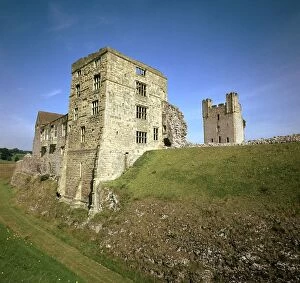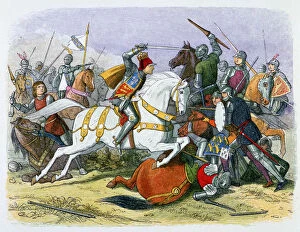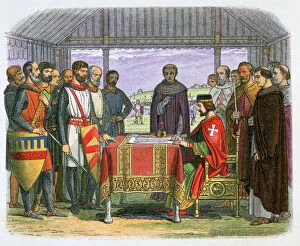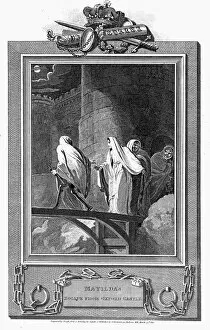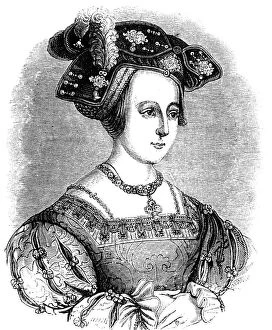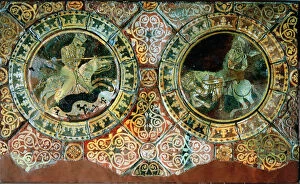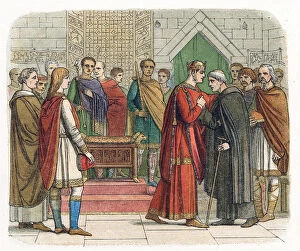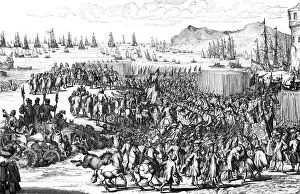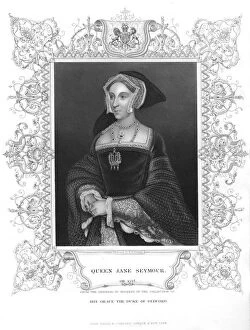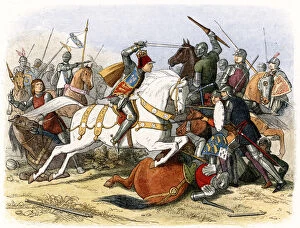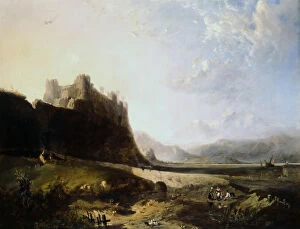King Of England Collection (#46)
"Unveiling the Legacy: The Kings of England Through Time" William of Orange at the Battle of the Boyne
For sale as Licensed Images
Choose your image, Select your licence and Download the media
"Unveiling the Legacy: The Kings of England Through Time" William of Orange at the Battle of the Boyne, 1668: Witness the triumph and determination as William of Orange secures his place in history during this pivotal battle. Portrait of King Henry VIII of England, 1540: Delve into the complex persona and grandeur embodied by one of England's most iconic monarchs, captured flawlessly by Holbein. A Feast - Detail from the Bayeux Tapestry, late 11th century: Step back in time to a lavish feast depicted on this ancient tapestry, offering a glimpse into medieval royal indulgence. Edward refuses succor to his son at Crecy, 1346: Experience heart-wrenching drama as James William Edmund Doyle immortalizes Edward III's difficult decision on the battlefield. Charles I (chromolitho): Explore an artistic portrayal that encapsulates both regal authority and vulnerability during a tumultuous period in English history. Portrait of Jane Seymour by Holbein, 1536: Discover Hans Holbein's exquisite artistry as he captures Queen Jane Seymour's grace and poise amidst Tudor court intrigue. Death of Henry Percy (Harry Hotspur) at the Battle of Shrewsbury, 21 July 1403: Relive a fateful moment when Harry Hotspur meets his demise in this captivating depiction that echoes bravery and sacrifice. William the Conqueror: Uncover how one man forever altered English history through conquest and laid foundations for future kings to follow with awe-inspiring strength. Catherine Howard, 1935: Peer into Catherine Howard's enigmatic life through this portrait that hints at her youthful beauty overshadowed by tragic circumstances. Portrait - Arabella Stewart, c16th century.


